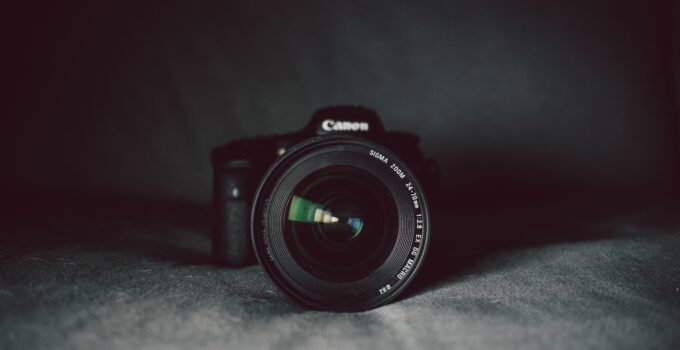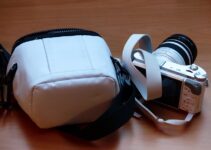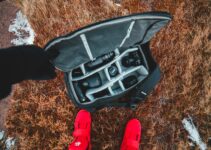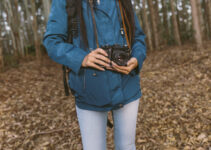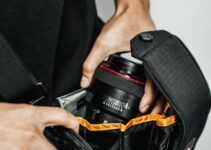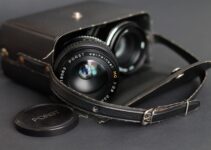Ever wondered how long your camera needs to stay in the bag before it’s ready to capture the perfect shot? Camera acclimation is a crucial step to ensure optimal performance, but determining the ideal duration can be a mystery.
In this article, we uncover the secrets behind camera acclimation time and provide practical insights to help you get the most out of your gear.
From temperature fluctuations to environmental conditions, we’ll guide you through the factors that influence acclimation.

Get ready to unlock the secrets of preparing your camera for remarkable photography experiences. Join us on this enlightening journey! Here look up what size dry bag for camera?
Understanding Camera Acclimation
Camera acclimation refers to the process of allowing your camera to adjust to new environmental conditions gradually.
When you move your camera from a cold environment to a warm one or vice versa, the temperature and humidity disparities can cause moisture to accumulate on sensitive camera parts.
This moisture can potentially damage the camera’s delicate electronics, lens elements, and sensor. Here look up how to please a photo camera in bag?
How long does camera need to be in bag to acclimate?
The recommended time for camera acclimation is typically 1 to 2 hours. However, this can vary depending on factors such as the temperature differential, humidity levels, and the camera’s build and sealing. It’s important to assess these factors and adjust the acclimation time accordingly.
To ensure successful camera acclimation, follow these best practices:
- Utilize camera bags with moisture-absorbing materials or silica gel packets to minimize moisture content during acclimation.
- Opt for gradual temperature transitions whenever possible to avoid sudden condensation.
- Keep your camera inside the bag with the zippers closed during the acclimation process to create a controlled environment and limit exposure to external moisture.
- Prior to placing your camera in the bag, ensure it is clean and free from dust or dirt. Regular cleaning helps maintain optimal performance and reduces the risk of issues during acclimation
Factors Affecting Camera Acclimation (How long does camera need to be in bag to acclimate?)
Several factors influence the acclimation time required for a camera: Besides here you can check out if you have shoulder pain you can check out what camera bag you must need.

-
Temperature differential:
The greater the temperature difference between the original and new environments, the longer the acclimation process.
-
Humidity levels:
High humidity environments may require additional time for acclimation due to the increased moisture content in the air.
-
Camera build and sealing:
Different camera models have varying levels of weather sealing and resistance to moisture. Higher-end professional cameras often have better protection against environmental elements.
Recommended Time for Camera Acclimation
While there isn’t a universally fixed duration for camera acclimation, a general guideline is to allow your camera to acclimate for at least 1 to 2 hours.
This timeframe allows the camera’s internal and external components to gradually adjust to the new environment. However, it’s important to note that acclimation times can vary based on the factors mentioned earlier.
Best Practices for Camera Acclimation (How long does camera need to be in bag to acclimate?)
To ensure successful camera acclimation, consider the following best practices: Moreover, here you can look up what kind of camera bag is needed for active in camera?

- Use camera bags with moisture-absorbing materials: Some camera bags come with built-in moisture-absorbing compartments or include silica gel packets. These help in reducing the moisture content inside the bag during acclimation.
- Gradual temperature transition: Whenever possible, avoid exposing your camera to sudden extreme temperature changes. Gradual transitions are less likely to cause condensation.
- Keep the camera bag closed: During acclimation, keep the camera inside the bag with the zippers closed. This helps to create a controlled environment and minimize exposure to external moisture.
- Clean the camera and lenses: Before placing your camera inside the bag, ensure it is free from dust and dirt. Cleaning the camera and lenses regularly helps to maintain their performance and prevent issues during acclimation.
Related FAQs
While it’s generally recommended to allow 1 to 2 hours for camera acclimation, you can shorten the time if the temperature and humidity differentials are minimal.
Use your judgment and monitor the camera for any signs of condensation before use.
What should I do if condensation forms on my camera during acclimation?
If condensation appears on your camera, remove it from the bag and gently wipe off the moisture using a soft, lint-free cloth. Allow the camera to air dry completely before using it to avoid any potential damage.
Does camera acclimation apply to all types of camera equipment?
Yes, camera acclimation is essential for all types of camera equipment, including DSLRs, mirrorless cameras, lenses, and other accessories.
Each component can be susceptible to moisture-related issues when exposed to significant temperature and humidity changes.
Is it necessary to acclimate my camera when moving between indoor environments with controlled temperatures?
While the risk of condensation is lower when transitioning between controlled indoor environments, it’s still advisable to allow a brief acclimation period.
This helps the camera adjust to any slight variations in temperature and humidity that may exist.
Can using a camera rain cover eliminate the need for acclimation?
Camera rain covers primarily protect against water and moisture during shooting in wet conditions.
While they provide some level of protection, it’s still important to acclimate your camera when moving between environments to prevent condensation buildup.
Conclusion
In conclusion, taking the necessary steps to acclimate your camera properly is crucial for preserving its longevity and ensuring consistent performance.
By allowing sufficient time for acclimation and implementing best practices, you can minimize the potential risks associated with temperature and humidity variations.
Proper acclimation of your camera is vital to prevent condensation-related damage and ensure consistent performance in different environments.
By allowing your camera to gradually adjust to new temperature and humidity levels, you minimize the risk of moisture accumulation and potential damage to sensitive components.

